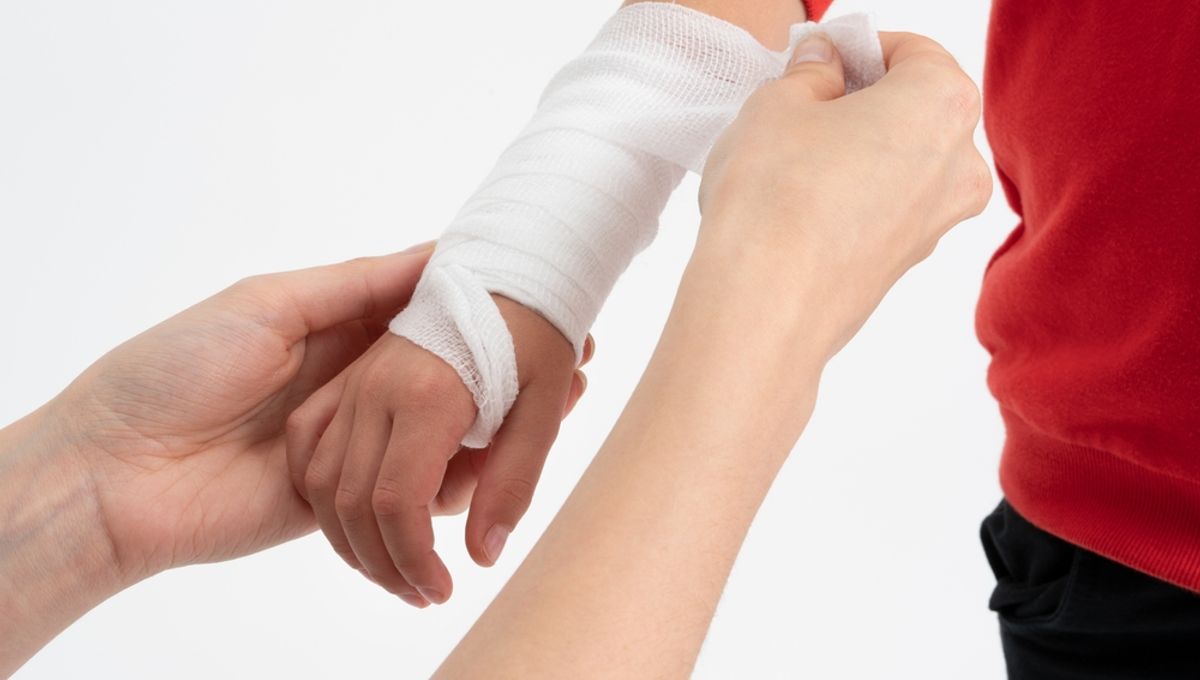
A trial of the first ever topical gene therapy has produced impressive results, improving wound healing in patients with a life-threatening skin disease. The team behind the healing gel, beremagene geperpavec (B-VEC), is hoping to gain approval from the Food and Drug Administration (FDA) to allow more patients to access the treatment.
Dystrophic epidermolysis bullosa is a genetic skin disease that causes painful blistering of the lower layer of the skin, the dermis. Even very minor trauma to the skin can cause blisters or tears – that can mean anything from clothing rubbing against the skin to using adhesive bandages or taking a warm bath. Blistering often progresses to large, open wounds, which can take decades to heal. Patients are more likely to develop skin cancer and infections, and sadly do not often survive beyond early adulthood.
Up to now, the only treatment options available to patients with dystrophic epidermolysis bullosa have focused on managing symptoms. However, the Stanford University team behind the new B-VEC gene therapy hopes that might be about to change.
A double-blind, placebo-controlled trial of B-VEC in 31 people with dystrophic epidermolysis bullosa, including children, found that 67 percent of wounds treated weekly with the gel were completely healed after six months. In the group treated with the placebo, only 22 percent of wounds were healed at six months.
One of the trial participants, Vincenzo Mascoli, spoke about his results in a statement: “After four months, I saw an improvement on a large wound on my back that I had for 20 years. After six months, the wound had healed completely and was much less painful.”
“This treatment made a huge difference in quality of life for Vincenzo and other trial participants,” summarized lead study author Dr Peter Marinkovich, director of Stanford Medicine’s Blistering Disease Clinic.
So, how does the treatment work? The genetic mutation underlying dystrophic epidermolysis bullosa means patients can’t produce a protein called collagen VII. The normal function of this protein is to bind layers of the skin together – without it, the layers slide against each other, leading to excruciating blisters and wounds. The B-VEC gel delivers a copy of the collagen VII gene directly to the skin where it is applied so that the protein can be made and the skin’s natural structure restored.
A modified herpes simplex virus is used as the vector to carry the collagen VII gene. Because these viruses have evolved to outwit the human immune system, B-VEC can be applied as often as needed without the risks associated with other gene therapy approaches.
“We saw no inflammation, significant side effects or immune neutralization of the drug, even with repeated administration of the gel over the six months of the trial period,” said Dr Marinkovich.
Because of these positive results, most of the participants have been able to continue to access treatment even though the trial has ended. The researchers now want to carry on testing the gel on other areas of the skin, as well as mucosal surfaces like the inside of the mouth and throat, which can be badly affected in some patients with the disease.
They have also applied for FDA approval, so there is hope that this potentially life-changing therapy could one day be more widely available.
The study is published in The New England Journal of Medicine.
Source Link: New Gene Therapy Shows Promise In Healing Decades-Old Wounds